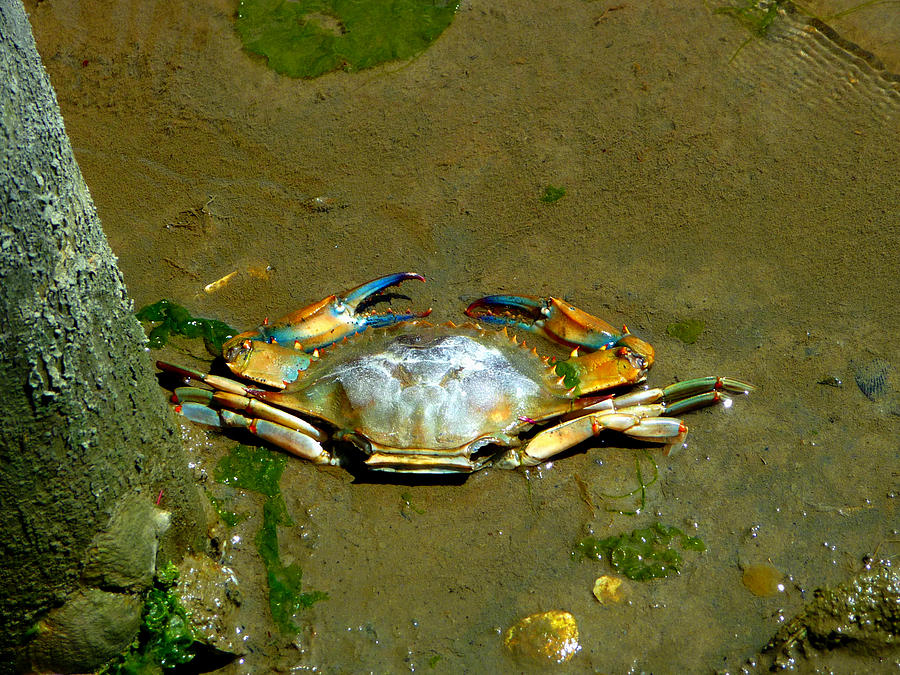
The last time the blue crab population dipped to a troubling low was in 2001, with an estimated 254 million crabs across the Bay. Virginia netted close to $28 million from the commercial harvest in 2020 alone.ĭuring the 2020 crabbing season, 41.6 million pounds of blue crabs were harvested from the Bay and its tributaries, according to the 2021 Blue Crab Advisory Report from the Chesapeake Bay Stock Assessment Committee (CBSAC). Considered the most valuable commercial fishery in the Bay, the value of blue crab landings in Maryland is estimated to have hovered around $45 million annually for the past decade. The third factor is changes in the environment, such as reduced water quality and loss of habitat, among a number of other unknowns that can potentially contribute to the declining crab numbers.Ĭhesapeake Bay is the source of more than one-third of the total blue crab supply in the United States, according to the Chesapeake Bay Program, which tracks the bay’s signature species. The invasive fish-introduced decades ago in several Virginia rivers-has a ferocious appetite, and likely consumes a large number of blue crabs, Miller said. Predation is another important factor, especially by the blue catfish, which can grow up to 5 feet long and over 100 pounds. Credit: Kristen Zeis/Deep Indigo Collective for Inside Climate News Hudgins shows a blue crab he caught in the Chesapeake Bay in Mathews, Virginia, on Friday, June 10, 2022. The population has declined for female, male and juvenile crabs, with the number of adult male crabs also at an all-time low since the survey began. “All of the things that we appreciate with family and friends, it happens around a crab feast.”Ĭarried out jointly by Maryland’s department of Natural Resources and the Virginia Marine Resource Commission, the dredge survey released last month put the estimate for the Bay’s prized critter at 227 million-the lowest in the survey’s history. You pick crabs and spend an extended meal with wooden mallets and cold beer and tell jokes and reminisce,” said Thomas Miller, professor of fisheries science at the University of Maryland Center for Environmental Science, who has been part of the survey team since its inception 33 years ago. And even the scientists who worked on the most recent winter dredge survey, which measures the population, grow wistful when they consider the colorful crustacean so central to Baltimore and Maryland culture. Call us at 41 to place your order now.For a third straight year, the number of crabs in the Chesapeake Bay has dropped, this time to a record low. Located in the heart of the beautiful, historic district, we offer guests ample seating with scenic views overlooking breathtaking Annapolis Harbor.Ĭurb Side Pick Up / Carry Out Still Available! Check Out our Menu! Want your delicious crab a lot faster? Head to Buddy’s Crabs & Ribs right now! A Long Tradition of Excellent Food in Annapolisīuddy’s Crabs & Ribs is a family-owned and operated restaurant in Annapolis. They are also not allowed to catch sponge (egg-bearing) crabs or female peeler or hard crabs. Lastly, recreational crabbers are prohibited from selling the crabs they catch.
#Chesapeake bay blue crab license#
In addition, a passenger on a vessel with a valid crabbing license won’t need their own license to crab. Recreational crabbing in the Atlantic Ocean or in its coastal bays does not require a license. They must also have a device to prevent other creatures like turtles from going into the pot. All pots need to have the owner’s name and address clearly labeled. Those crabbing on their own waterfront property do not need a license for utilizing a maximum of two registered crab pots. Licensed crabbers can catch a maximum of one bushel of hard crabs or 24 soft crabs or male peelers. In any case, a license is required if your catch will exceed 24 hard crabs or a dozen peelers or soft crabs. Click on the link below.Īs a recreational crabber, you will be required to get a license if you’re going to use eel pots, net rings, collapsible crab traps, seines or trotlines. Maryland’s Rules & Regulationsīefore you get out there crabbing on April 1st, Maryland DNR requests that you review our state’s blue crab rules and regulations.

Picking crab is an enjoyable summer activity that so many of us love.
#Chesapeake bay blue crab free#
However, spring is well on its way, and the official opening of the blue crab season is almost upon us.Īs they do every year, the Maryland Department of Natural Resources (DNR) has recently announced that commercial and recreational crabbing can begin on Saturday, April 1 for the Atlantic Ocean and Chesapeake Bay areas.Ĭitizens of the Free State look forward to April Fool’s Day like no other because the start of the blue crab season has been a beloved Maryland tradition for many years. The typical early April weather in Maryland is usually not the time to put on our swim trunks and bikinis.


 0 kommentar(er)
0 kommentar(er)
